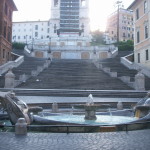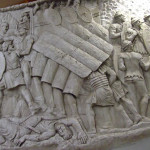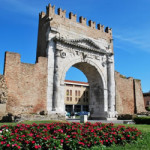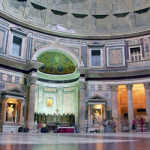The Arch of Constantine
Data Pubblicazione novembre 2, 2013Located right next to the Coliseum, the Arch of Constantine (Arco di Costantino) is one of the most visited landmarks in all of Rome. It is a triumphal arch erected to commemorate Roman Emperor Constantine’s victory over Maxentius in the Battle of the Milvian Bridge in 312 A.D. The night before the battle, Constantine had a vision. He saw the symbol of the cross in the sky with the words By this sign, conquer.
The following day, he had to face a much larger army than his own, but he had his soldiers carry the Christian symbol into battle and was victorious. So Constantine the Great adopted Christianity for himself and declared Christianity officially tolerated all over the Empire.
With Roman Emperor Constantine’s conversion, Christian oppression and prosecution ended and the advance of Christendom started. Therefore, the event commemorated by the Arch of Constantine in Rome was a decisive moment in the history of the entire Western world.
The Arch of Constantine is richly decorated with statues and reliefs made out of marble taken from other monuments. Its decorations and reliefs of the friezes are considered as the last great example of Rome’s monumental sculpture. Most of its decoration pays tribute to the Roman Emperor Constantine, also known as Constantine the Great, for his victory in the Battle of the Milvian Bridge as well as for his accomplishment in the Roman society. The whole structure is 22 metres high and 26 metres wide and includes three separate arches, the central one being 12 metres high and the two lateral arches being 7,5 metres high each.
The Arch of Constantine is the most recent arch of Rome’s three remaining imperial triumphal arches, which are the nearby Arch of Titus located on the Via Sacra and the white marble Arch of Septimius Severus (Arco di Settimio Severo).
The Arch of Constantine is located next to the Coliseum, near the Roman Forum and the Palatine Hill, on the corner of Piazza del Colosseo and Via di San Gregorio. The nearest Metro stop is Colosseo, on the blue line. This 22-meter high arch is free to visit, there are no opening hours and it is always accessible.
Related Posts
Tags: best places to visit in rome, historical places in rome, top attractions in rome
Rome Tour

Climb Saint Peter’s chapel
Rome top view is totally breath taking: your eyes will look right into Conciliazione’s street where you can ...Auditorium Parco della Musica
It is a multifunctional complex in Pietro de Coubertin street (official web site: auditorium.com): through this creation, Rome ...
CASTEL SANT’ANGELO’S TERRACE
You cannot miss Castel Sant Angelo if you are visiting Rome. In fact in its main entrance has tons ...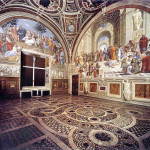
Musei Vaticani: le Stanze di Raffaello
It’s some kind of magic experienced in here that gives to the visitor a feeling that never goes ...
A Museum in Roma in Trastevere
The Museum of Roma In Trastevere (Piazza Sant'Egidio 1/b) it is a very characteristic place. Here there is ...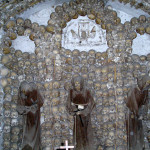
Santa Maria dell’Immacolata Concezione’s church
When you step in this church you will remain astonished from the beauty of the structure but either ...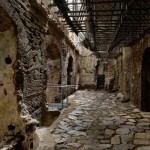
CRYPTA BALBI, NATIONAL ROMAN MUSEUM
Only one block that contain the whole Roman history: the crypt it is none other than a Lucio ...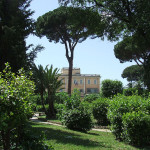
VILLA CELIMONTANA
While walking around Villa Celimontana (by Via della Navicella, 12) it is possible that you end up under ...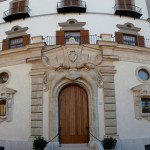
Monster’s house – Palazzo Zuccari
It is located at the bottom of Trinità dei Monti along Sistina and Gregoriana’s street, and it is ...